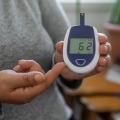JDRF Clinical Trials Connection

So how does it work? JDRF has worked with VisionTree to search the clinicaltrials.gov database. The trials that involve type 1 diabetes or its prevention are saved, and then additional “search tags” are added to these trials based on study enrollment criteria of age, disease duration, and location of trial sites. After you sign in (all information is kept confidential), Clinical Trials Connection allows you to search by trial location, enrollment criteria, and to compare trials side by side and ultimately create custom reports of trials to save and share with your healthcare team. Less than four weeks after its introduction, more than 5,000 people have registered to be part of this service. This is a win-win-win in our view—it should help patients identify appropriate trials by simplifying the search of clinicaltrials.gov;it helps companies find patients for their research; and it helps doctors and educators advise of trials that may be right for their patients. Ultimately, we believe Clinical Trials Connection has potential to speed approval for drugs and devices. We have just started testing this ourselves and encourage all patients with type 1 diabetes to try it out. The next step: convince another amazing advocacy organization to recreate this tool for those with type 2 diabetes and with prediabetes!







